by MICHAEL PIDWIRNY, ETHAN CLARK, and KALIM BAHBAHANI
Introduction
By the end of the 21st century, the Intergovernmental Panel on Climate Change (IPCC) predicts that the continued emission of greenhouse gases by human activity will significantly increase surface air temperatures and change patterns of precipitation on our planet at local, regional, and global spatial scales. Being able to forecast how climate change will influence socio-economic systems is important to assess potential impact to humans. Understanding this impact will also allow for the development of effective adaptation and mitigation strategies to minimize the negative effects of climate change.
Analysis of the climatic impacts associated with human caused climate change at alpine ski resorts is quite straightforward using recently developed techniques which mathematically interpolate measurements from weather stations to other nearby locations. The research presented here uses spatially interpolated climate data which is generated by the software databases ClimateBC and ClimateNA (Wang et al., 2016). These climate software databases can produce data for the historical period 1901-2018 and future climate forecasts for the 21st century generated by climate simulation models used in the 5th Assessment Report of the IPCC.
Historical Trends – Cypress Ski Resort
Alpine ski resorts in western Canada receive considerable year-to-year variation in surface air temperature and snowfall during the winter season (December, January, and February). This variability can sometimes hide trends when the data record is short. Figure 1 illustrates the variation in winter mean temperature for Cypress Ski Resort located just north of Vancouver, British Columbia for the period 1901 to 2018. Over this 118-year period, we can observe an obvious warming trend for winter mean temperature of about 1.5° C. It is important to note that the winter mean temperature of 2015 was warm enough to cause this resort to close down for most of that ski season.
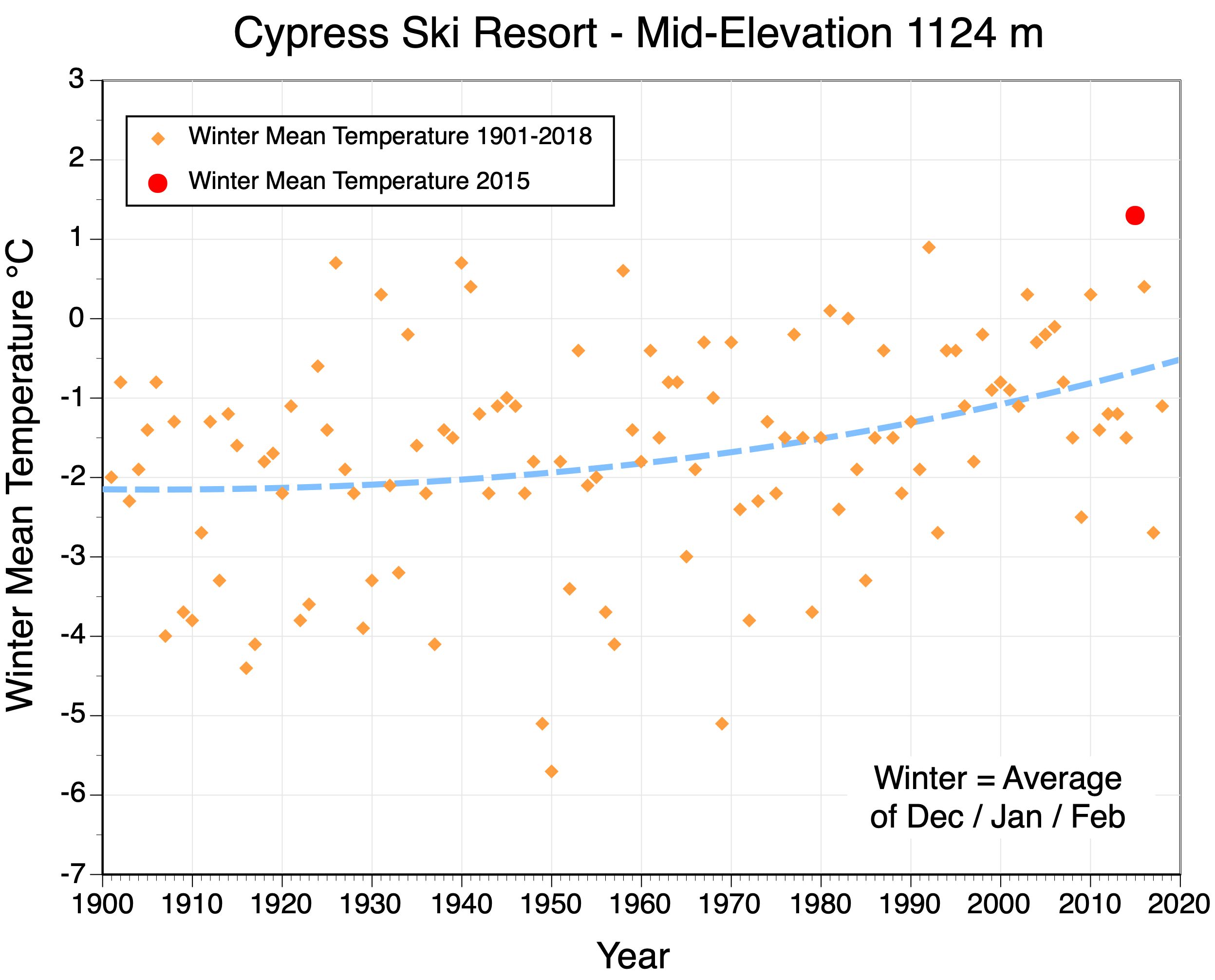
Figure 1. Observed winter mean temperatures from 1901 to 2018 at Cypress Ski Resort, elevation 1124 meters. The segmented blue line describes the best-fit trend line through the 118 yearly observations. This graph also identifies the year 2015, the warmest winter in the history of Cypress.
Figure 2 describes the variation in winter snowfall for Cypress Ski Resort for the period 1901 to 2018. On this graph, we see a trend of less snow falling at this resort over time. In the first half Snowfalls averaged about 475 cms in the first half of the 20th century. In the first 18 years of the 21st century, winter snowfalls declined by about 30% now averaging 332 cms.
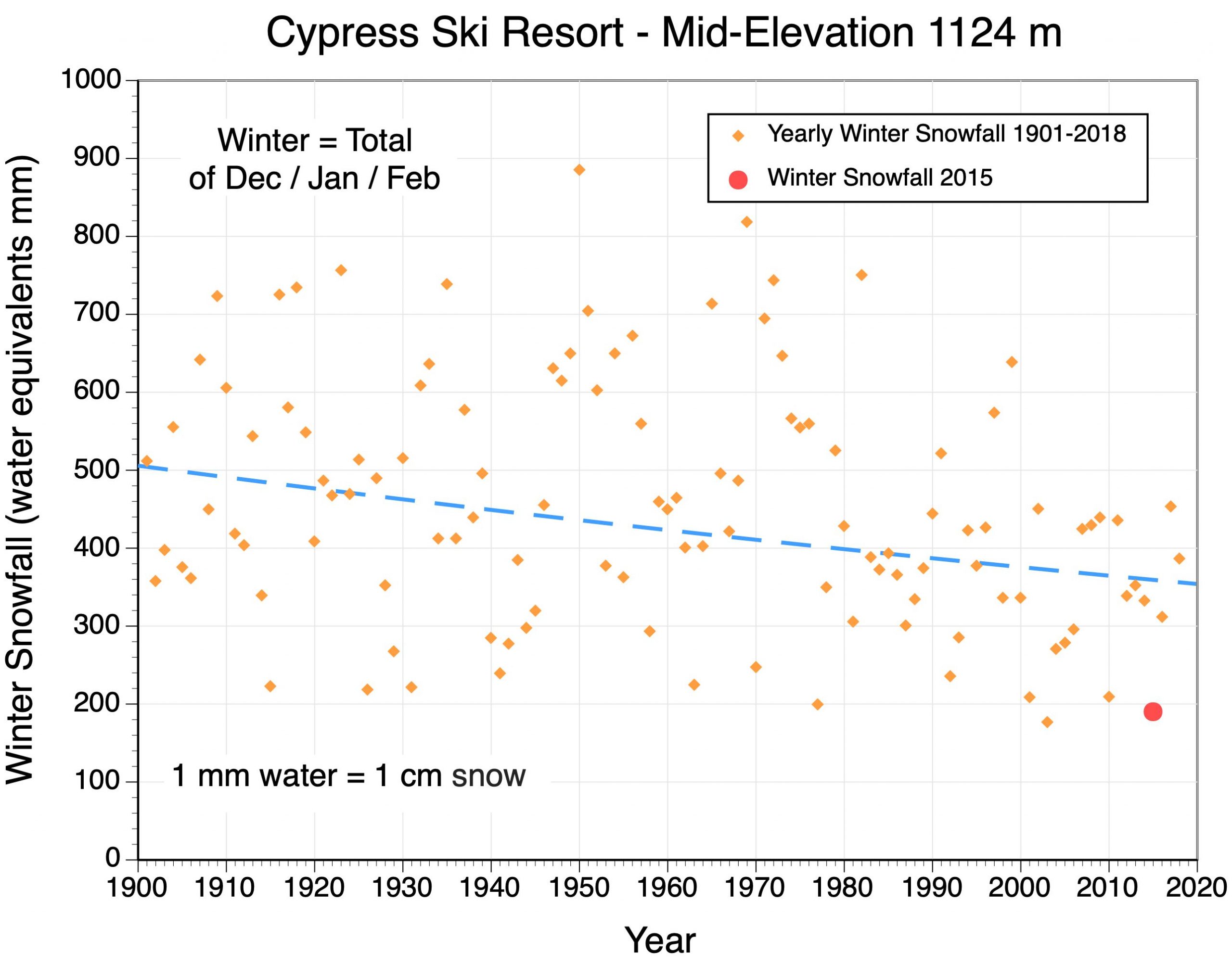
Figure 2. Observed winter snowfall from 1901 to 2018 at Cypress Ski Resort, elevation 1124 meters. The segmented blue line describes the best-fit trend line through the 118 yearly observations. This graph also identifies the year 2015, the warmest winter in the history of Cypress.
Warming winter temperatures have also caused an increase in the amount of rain that falls at Cypress ski resort (Figure 3). Over the period 1901 to 2018, rainfall increased by approximately 22%.
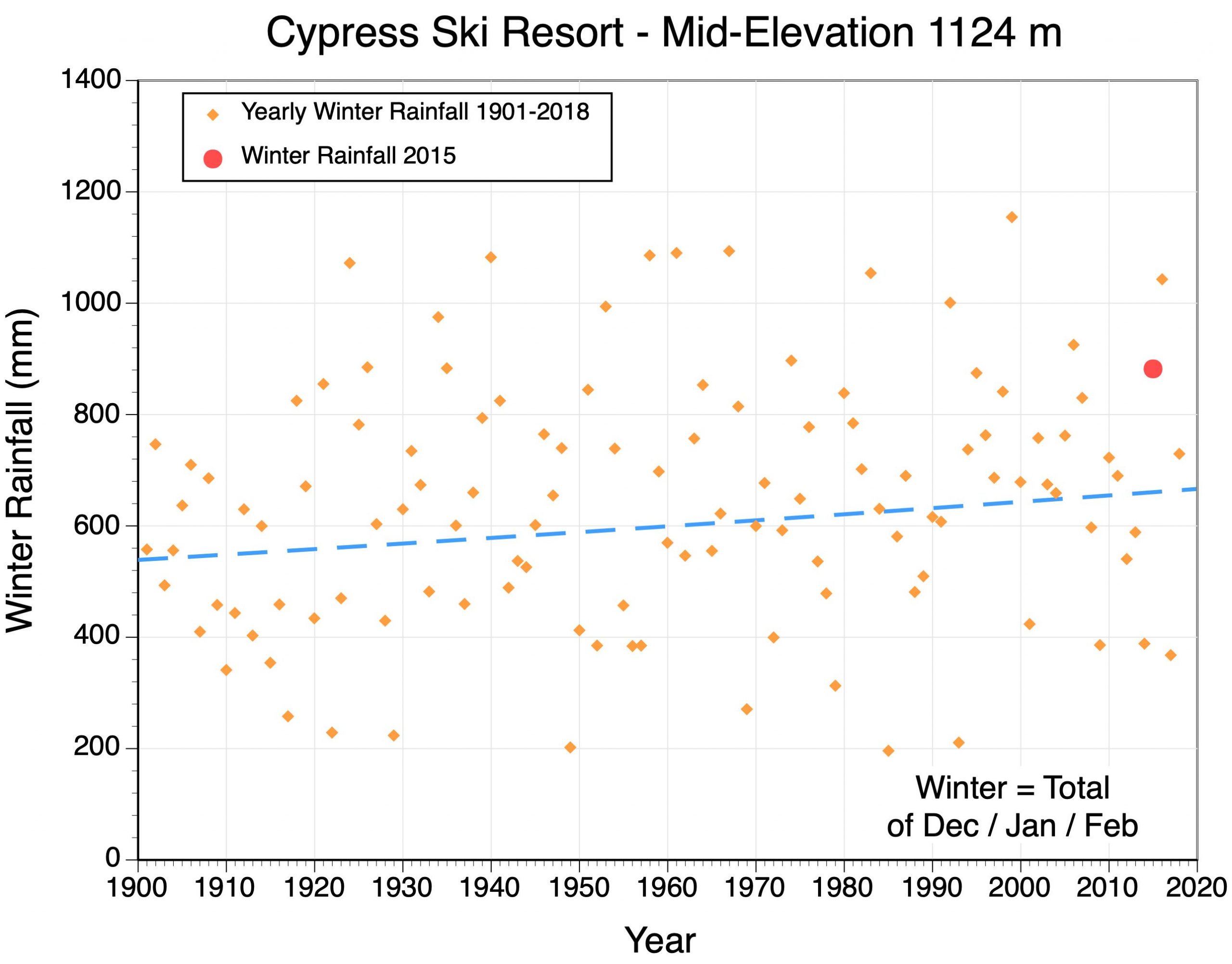
Figure 3. Observed winter rainfall from 1901 to 2018 at Cypress Ski Resort, elevation 1124 meters. The segmented blue line describes the best-fit trend line through the 118 yearly observations. This graph also identifies the year 2015, the warmest winter in the history of Cypress.
Future Trends at Ski Resorts in Western Canada
We can also use ClimateBC and ClimateNA to forecast how future climate change will affect Cypress Ski Resort and other resorts in western Canada. However, the exact nature of this climate change is somewhat uncertain because there is a possibility that we will be successful in limiting future greenhouse gas emissions into the atmosphere. Table 1 describes the estimated future atmospheric concentrations of the main greenhouse gases under a best-case (called RCP4.5) and a worst-case (called RCP8.5) scenario available in ClimateBC and ClimateNA. The best-case scenario correlates to a warming of the Earth’s surface globally of about 2.4° C relative to pre-industrial greenhouse gas levels. Many climate scientists believe this scenario can be achieved if nations act soon to reduce emissions primarily through reforestation, other carbon capture techniques, increased energy-use efficiency and switching to renewable based energy generation. The worst-case scenario corresponds to a future pathway where greenhouse gas emissions continue to increase exponentially and average global temperature becomes 4.3° C warmer by 2100.
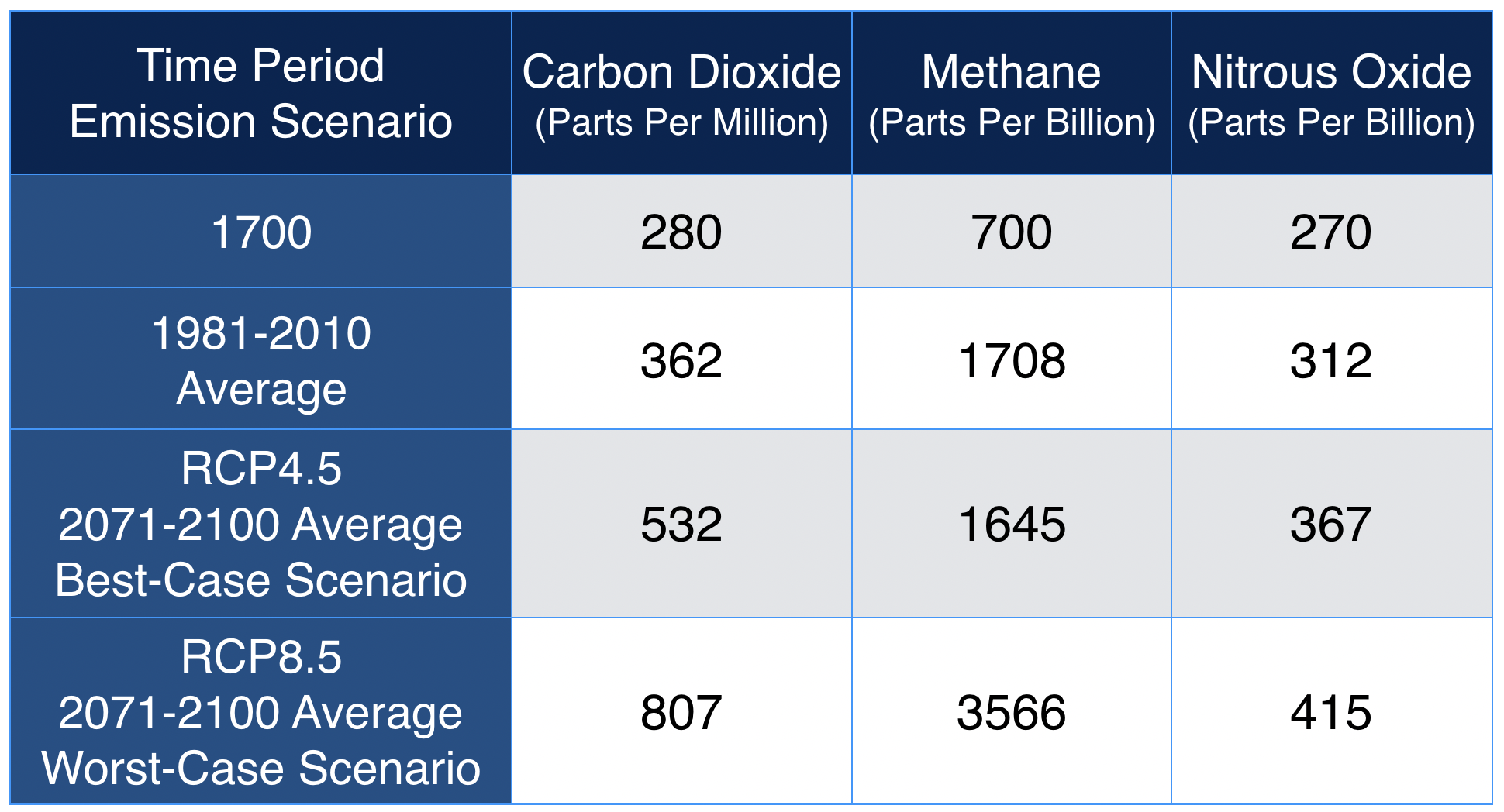
Table 1. Historic and future forecasted concentrations of carbon dioxide, methane and nitrous oxide in the lower atmosphere.
ClimateBC and ClimateNA provide data from fifteen global climate models for future forecasting (Table 2). These carefully selected fifteen models provide the same range of values that the more than 40 models provided in the IPCC’s Fifth Assessment Report (Knutti, Masson, and Gettelman, 2013). Our future forecasts for the twelve ski resorts studied present the mean value of these fifteen global climate models with error bars representing one standard deviation.
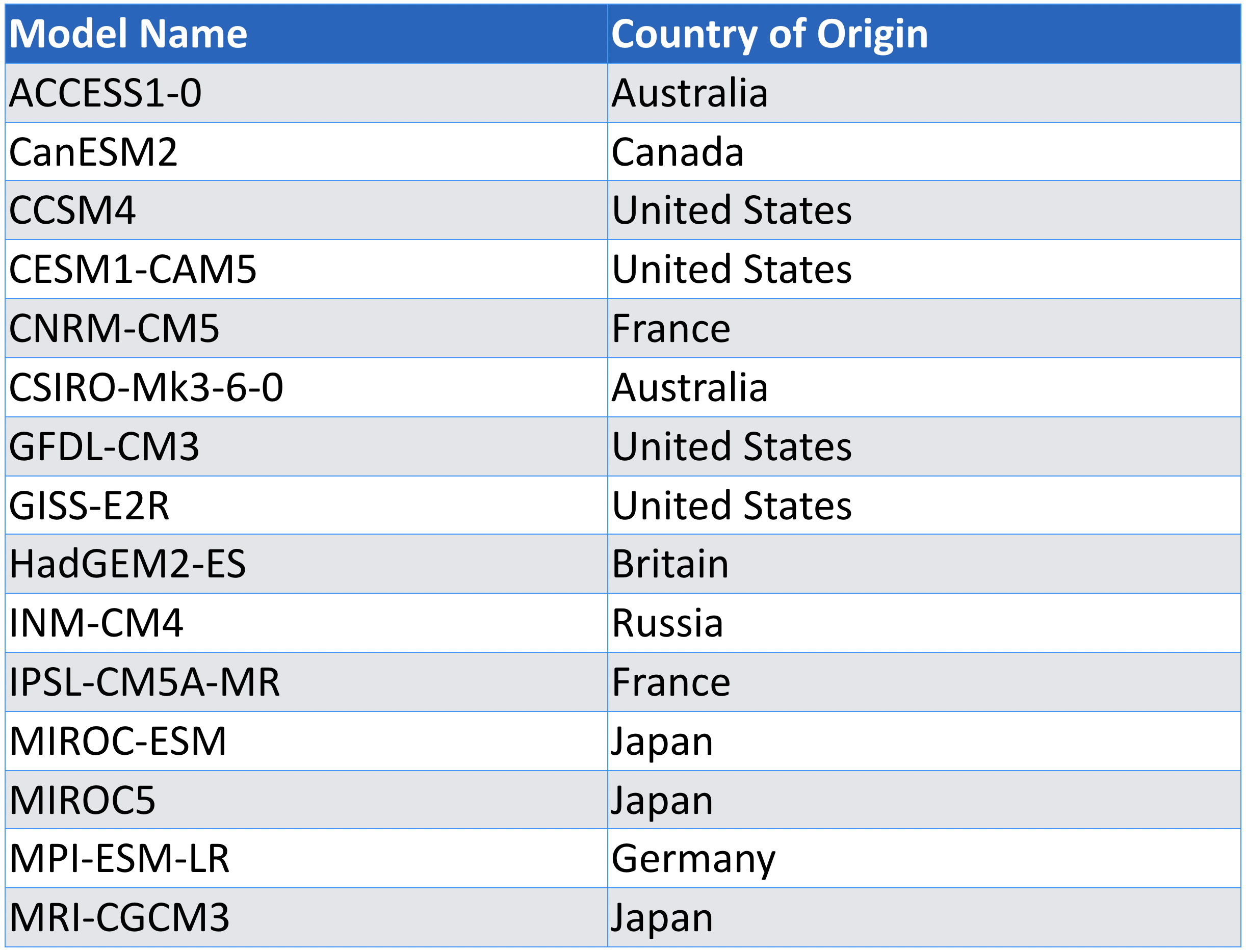
Table 2. The fifteen global climate models available in ClimateBC and ClimateNA.
Figures 3, 4 and 5 describe historical and future forecasted changes in winter mean temperature, winter snowfall, and ski season length for twelve ski resorts along a longitudinal gradient from Vancouver Island to western Alberta (Figure 2). Table 3 describes location and elevation characteristics for these ski resorts.
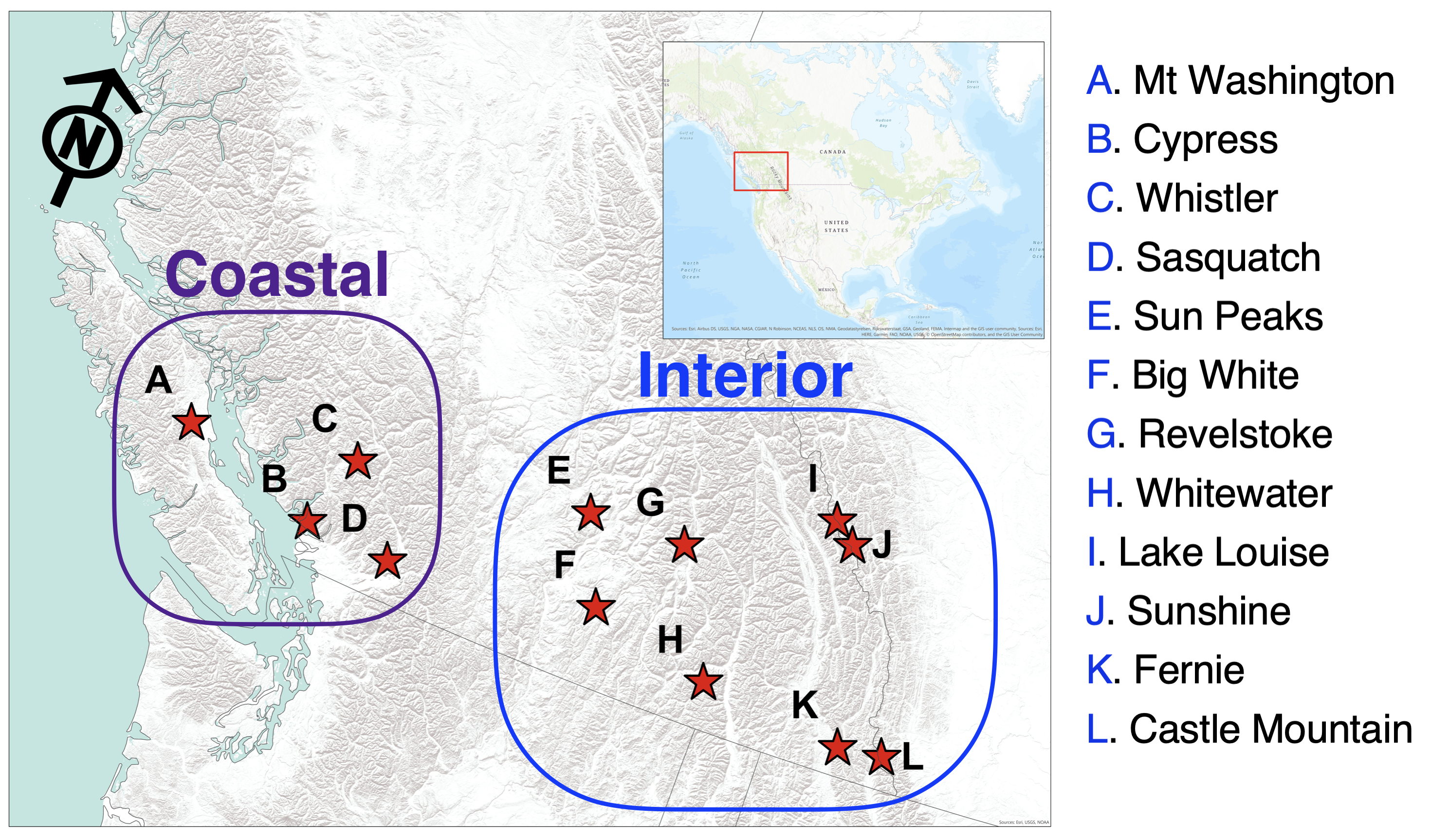
Figure 2. Relative location of the twelve resorts in western Canada.
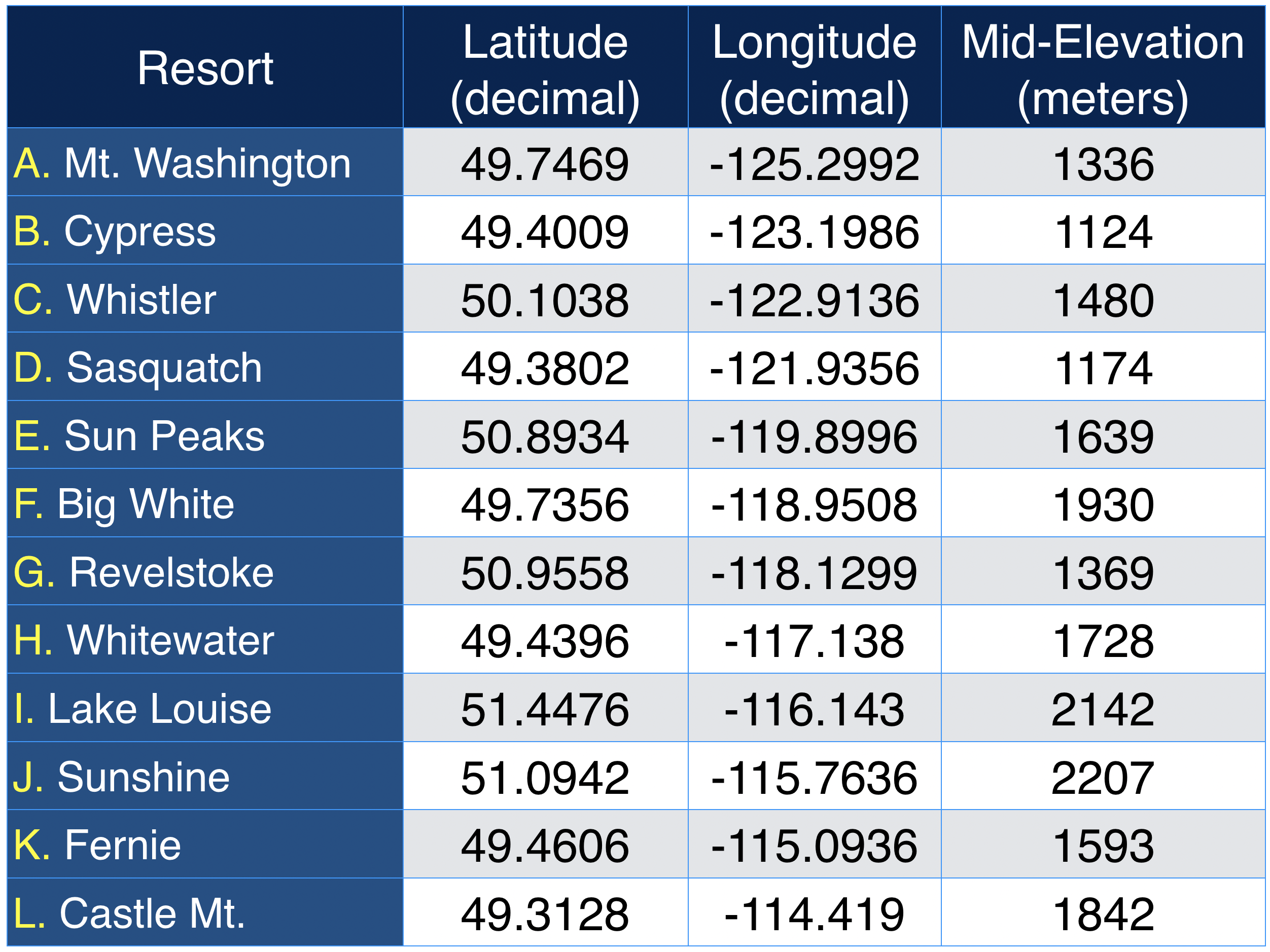
Table 3. Geographical coordinates and mid-elevation of the twelve resorts examined.
Figure 3 shows the anticipated future warming for the best-case and worst-case scenarios. The analysis suggests that coastal resorts are warmer than interior resorts. Winter season warming under best-case scenario (RCP4.5) is about 2.3 to 3.1°C relative to the temperatures experienced during 1971-2000. The greatest increase in temperature is seen in the resorts located in the central interior of British Columbia. Further, the coastal ski resorts of Mt. Washington, Cypress, and Hemlock will have winter mean temperature at or above 0° C by the end of the 21st century. Whistler’s winter mean temperature will resemble the climate of 1971-2000 at Cypress ski resort under this scenario. Winter season warming under worst-case scenario (RCP8.5) is about 4.1 to 5.2°C depending on the resort with the greatest increase seen in resorts located in the central interior of British Columbia. Under the worst-case scenario all of the coastal resorts will become much too warm to support winter recreation.
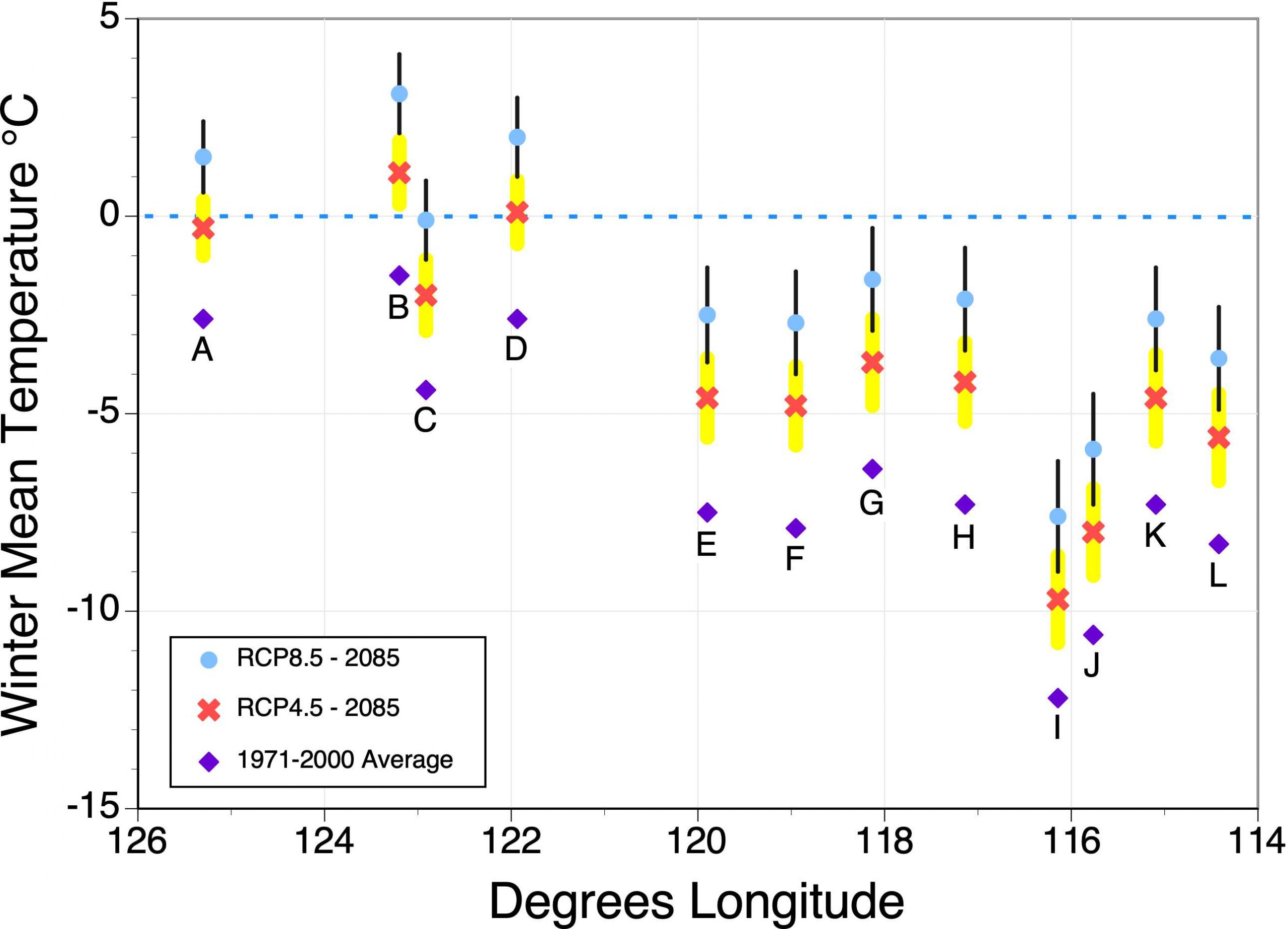
Figure 3. Historic and future forecasted changes in winter mean temperature for twelve selected ski resorts in western Canada. Values displayed based on data generated by ClimateBC or ClimateNA for the mid-elevation of each ski resort. Purple diamond = 1971-2000 average; red X = average of 15 climate models, RCP4.5 emission scenario, year 2085; and light blue dot = average of 15 climate models, RCP8.5 emission scenario, year 2085. Error bars for future model predictions (yellow for RCP4.5 and black for RCP8.5) are equal to one standard deviation.
Figure 4 suggests that the coastal ski resorts will face significant declines in winter snowfall in the future for both the best-case and worst-case scenarios. Under best-case scenario (RCP4.5) snowfall will increase by 1 to 31% at Fernie, Castle Mt., Sunshine and Lake Louise. Snowfall decrease by 1 to 28% for Sun Peaks, Big White, Revelstoke and Whitewater. Coastal resorts will see a large decrease between 21 to 50%. Under worst-case scenario (RCP8.5) snowfall will decrease 52 to 74% for coastal resorts. Sunshine and Lake Louise will see snowfall increase by about 15 and 29%, respectively. Decrease in snowfall of 26 to 38% for other interior resorts.
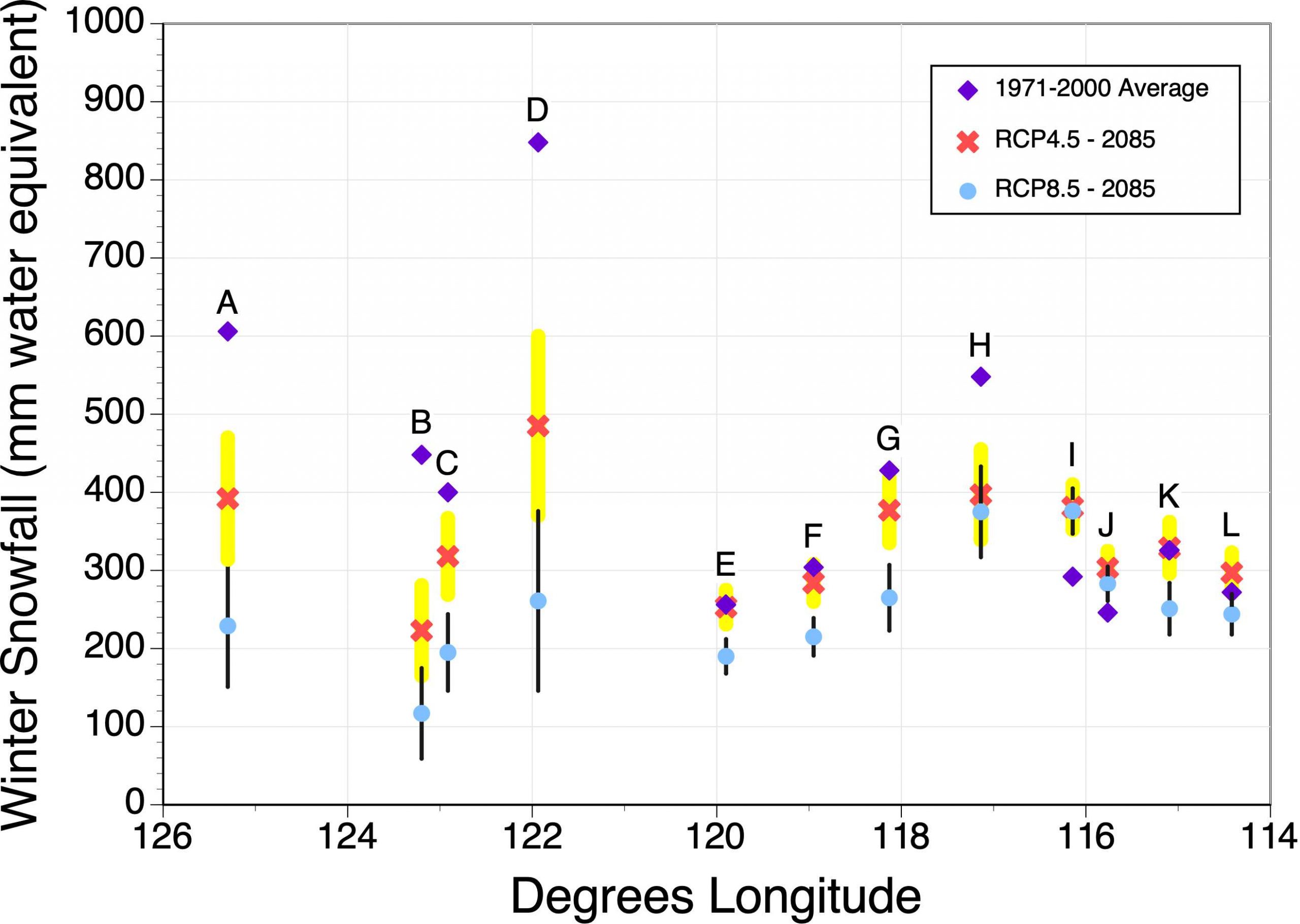
Figure 4. Historic and future forecasted changes in winter snowfall for twelve selected ski resorts in western Canada. Values displayed based on data generated by ClimateBC or ClimateNA for the mid-elevation of each ski resort. Purple diamond = 1971-2000 average; red X = average of 15 climate models, RCP4.5 emission scenario, year 2085; and light blue dot = average of 15 climate models, RCP8.5 emission scenario, year 2085. Error bars for future model predictions (yellow for RCP4.5 and black for RCP8.5) are equal to one standard deviation.
Figure 5 describes the change change in ski season length with future climate change. Ski season length generally increases inland because of colder temperatures (continentality). Under best-case scenario (RCP4.5) ski season will shrink by 27-45 days for interior resorts and 53-103 days for coastal resorts. Cypress no ski season under RCP4.5. Under worst-case scenario (RCP8.5) ski season will shrink by 48-77 days for interior resorts and 103-136 days for coastal resorts. Cypress, Mt. Washington, and Sasquatch will have no ski season under RCP8.5.
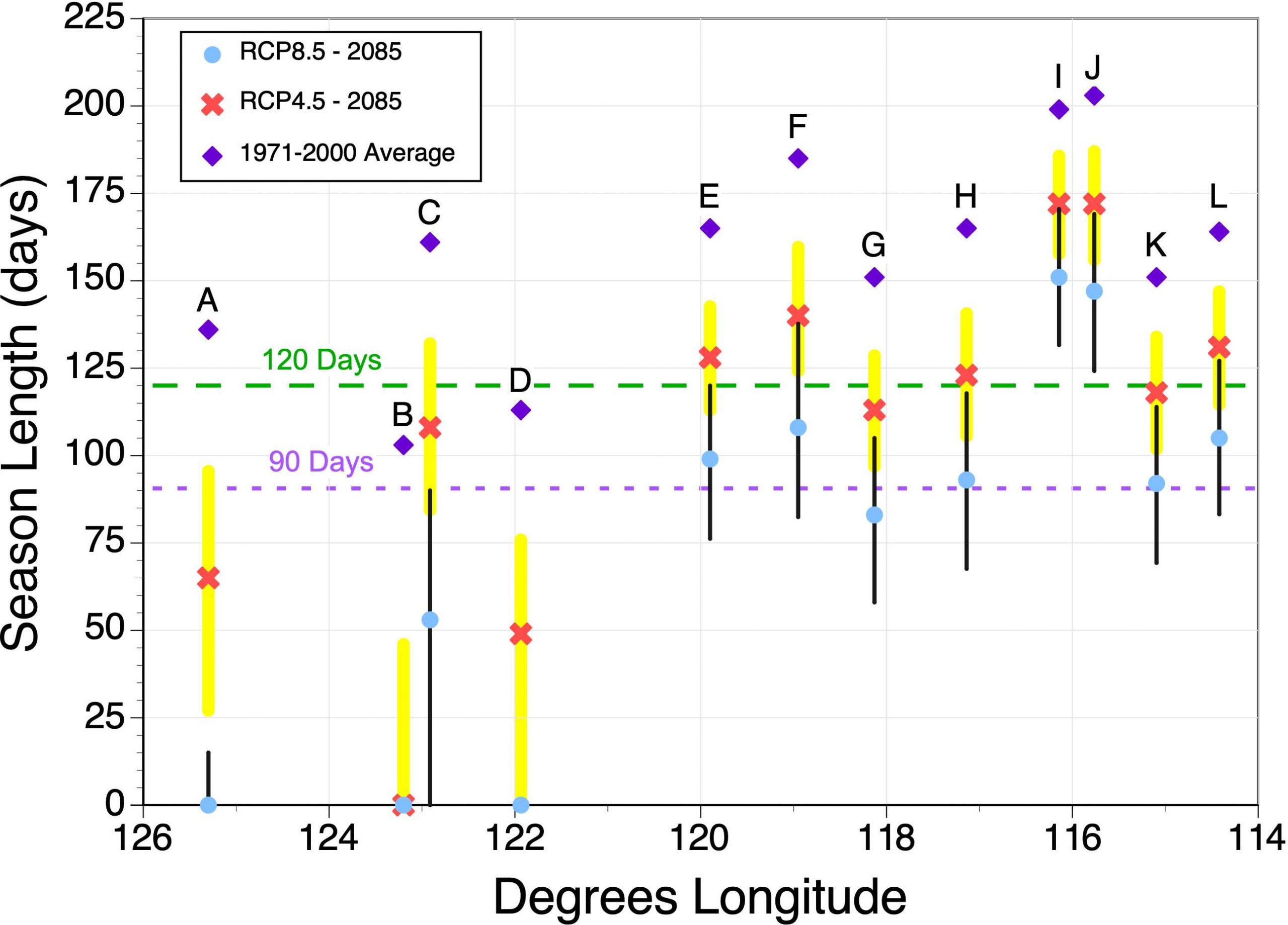
Figure 5. Historic and future forecasted changes in the length of the ski season for twelve selected ski resorts in western Canada. In this calculation, the threshold daily mean temperature for the start and end of the ski season is 0°C. Values displayed are based on data generated by ClimateBC or ClimateNA for the mid-elevation of each ski resort. Purple diamond = 1971-2000 average; red X = average of 15 climate models, RCP4.5 emission scenario, year 2085; and light blue dot = average of 15 climate models, RCP8.5 emission scenario, year 2085. Error bars for future model predictions (yellow for RCP4.5 and black for RCP8.5) are equal to one standard deviation.
In conclusion, human caused climate change in the near future is predicted to result in warmer winter temperatures, changes in snowfall and a decline in the length of the ski season for the alpine ski resorts of western Canada. How detrimental these changes will be to the ski industry in western Canada depends on whether governments can implement meaningful reductions in the future emissions of greenhouse gases.
References
Knutti, R., D. Masson and A. Gettelman. 2013. Climate model genealogy: Generation CMIP5 and how we got there. Geophysical Research Letters 40: 1194-1199.
Wang, T., A. Hamann, D. Spittlehouse and C. Carrol. 2016. Locally downscaled and spatially customizable climate data for historical and future periods for North America. PLos ONE 11(6) doi:10.1371/journal.pone.0156720.